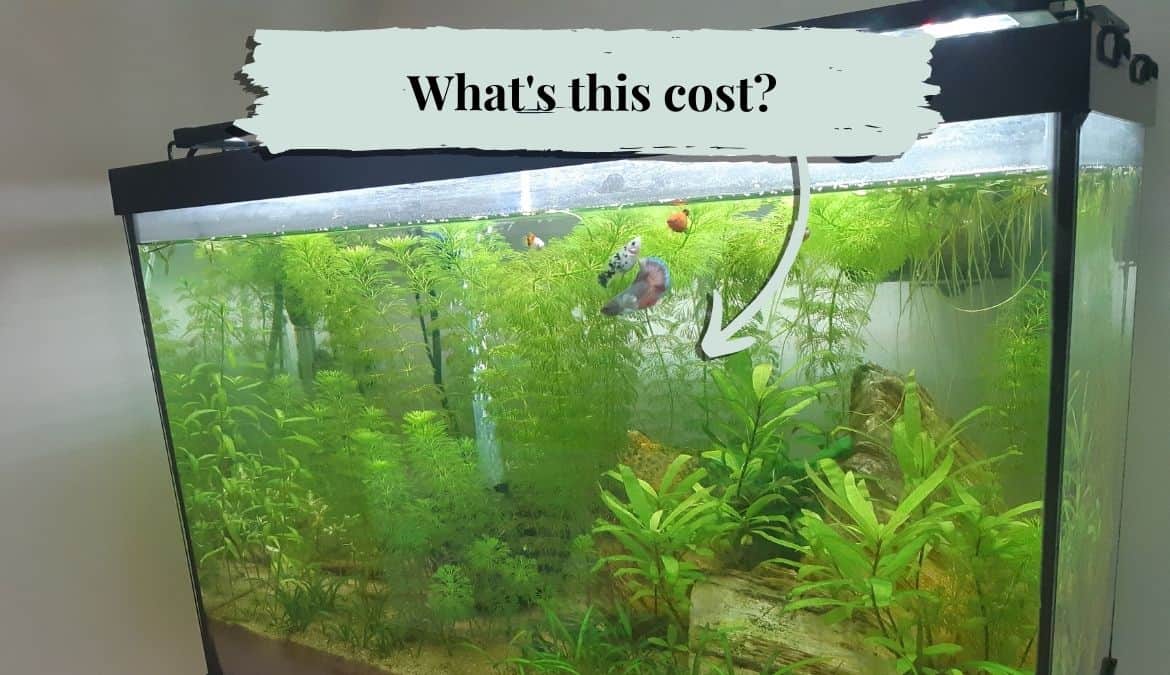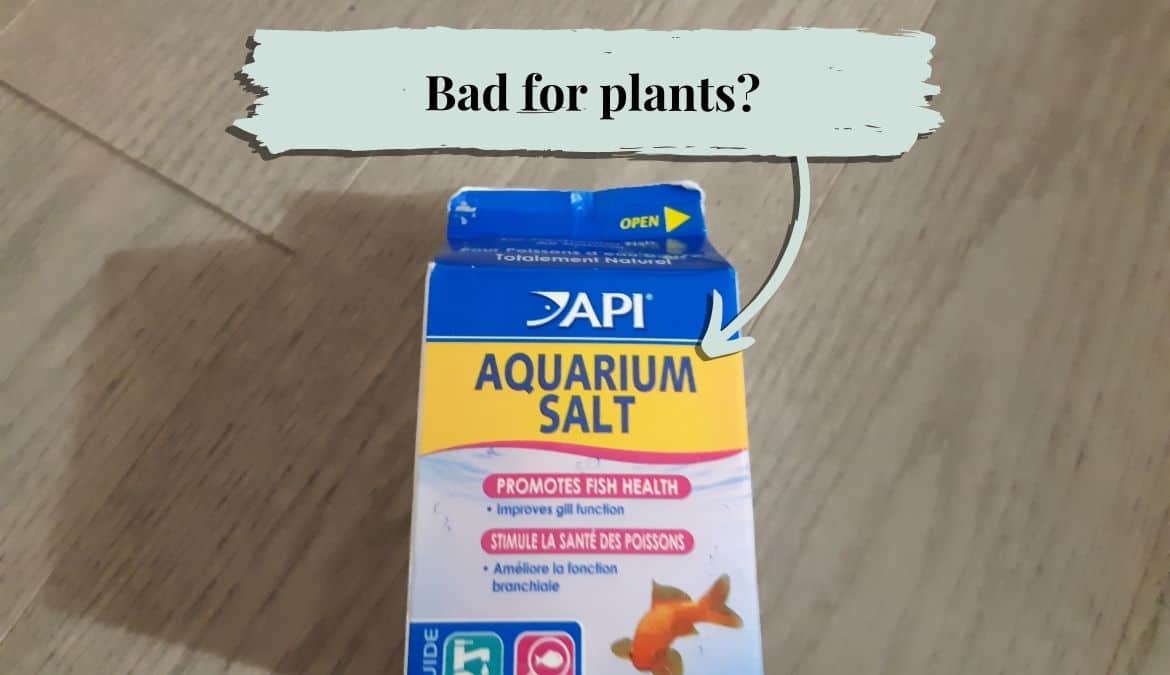Planted aquariums cost between $118.93-$858.87 USD to set up if all of the equipment is purchased brand new. The cost varies greatly based on the tank size and the amount of hardscape and plants. A 5-10 gallon tank can be realistically set up for between $150-$250.
There are many factors that affect how much planted tanks cost. So in this article we break down each of the equipment costs to help you get a more precise estimate based on your desired tank setup.
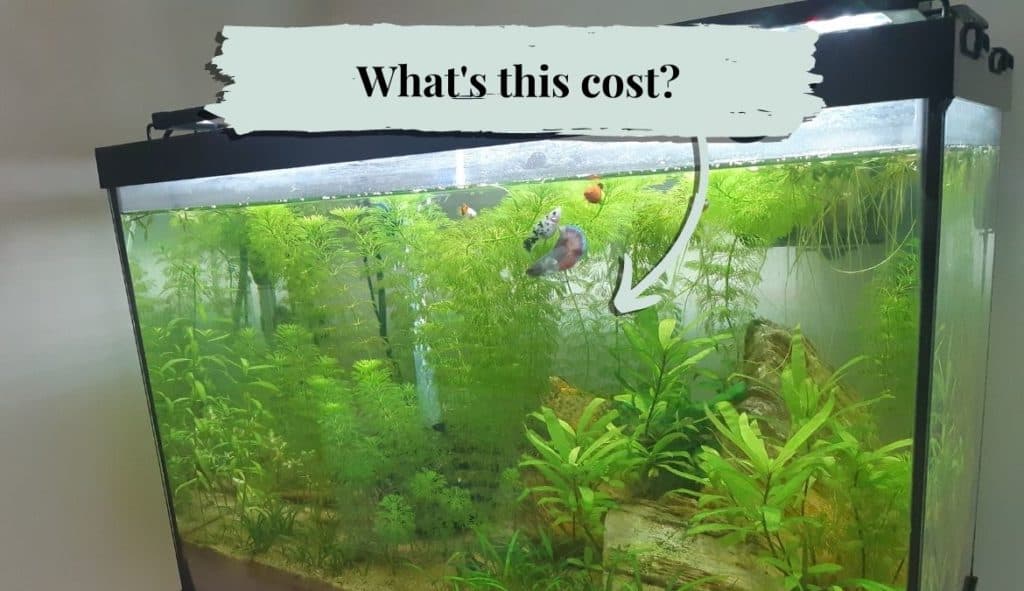
We paid approximately $600 to set up the 20 gallon tank pictured above.The most expensive items were the plants themselves and the rocks.
What do I need for a planted aquarium?
We have outlined below a list of mandatory and optional equipment for setting up a new planted aquarium. This list is based on aquariums that ranged from 5-30 gallons, which is what most people reading this are likely thinking about.
We don’t recommend anything smaller than 5-gallons if you are planning on putting fish in it because there are only a few species that we believe are suitable for that small of a tank.
Our list is also based on a low-tech setup that does not use CO2 injection or high intensity lighting.
Mandatory planted tank items
| Shopping list | Low end price | High end price |
|---|---|---|
| Aquarium | $24.99 | $380.00 |
| Lighting | $0.00 | $69.99 |
| Filter | $6.98 | $44.99 |
| Substrate | $20.00 | $119.98 |
| Plants | $15.00 | $200.00 |
| Fertilizers | $10.99 | $44.99 |
| Dechlorinator | $6.99 | $20.44 |
| Trimming tools | $13.99 | $31.99 |
| Bucket | $5.00 | $10.50 |
| Siphon | $14.99 | $35.99 |
Optional planted tank items
There are a few optional items that you may or may not choose to put in your planted tank. All of these items range between $90.97-$449.96 USD combined.
Hardscape refers to rocks, driftwood and other hard decorations. There are some health benefits of adding driftwood to your tank, such as tannins. But otherwise the hardscape is purely for aesthetic purposes.
Air line tubing, an air stone and an air pump are useful for creating surface agitation and increasing oxygen in an aquarium. They are also necessary for operating a sponge filter if that’s the filter type you choose to use.
Filter media is necessary if you choose a hang-on-the-back filter. These are the cartridges or bio balls that sit inside the compartment that hang on the back. They act as mechanical filtration and mediums for beneficial bacteria to colonize. But they are not necessary if you choose not to use a hang-on-the-back filter.
An aquarium stand is possibly necessary if you have a 20-gallon or larger tank. These tanks, when filled with water, can weigh more than 200 pounds, which might be too heavy for some household furniture.
| Shopping list | Low end price | High end price |
|---|---|---|
| Hardscape | $10.00 | $150.00 |
| Air line tubing | $4.00 | $15.00 |
| Air stone | $4.99 | $19.99 |
| Air pump | $5.83 | $29.99 |
| Filter media | $11.16 | $24.99 |
| Aquarium stand | $54.99 | $209.99 |
How much does each planted tank item cost?
Below is an explanation of each of the main planted tank items, what they cost and what to consider when buying your own.
$24.99-$380.00 for an aquarium tank
The tank itself is usually not the most expensive part of the setup. You can buy expensive rimless tanks that can cost up to $380. However, most tanks will cost between $3-5 per gallon.
We bought our 20-gallon tank for roughly $70.
5, 10 and 15-gallon tanks are very safe and the brand doesn’t matter too much. Once you move into the 20, 29, 30, 33 gallons and above range, you might want to at least briefly research brands and find one that has great customer reviews.
This is because they contain more than 200 pounds of water so you want a reliable manufacturer.
$20.00-$119.98 for substrate
On the low end, you can buy aquarium sand, which will cost $10-$15. However, we don’t recommend sand by itself for planted tanks because the roots will not receive adequate nutrition to grow.
In our experience, the best and least expensive happen to be the same – a layer of organic dirt capped with 2-inches of sand. A bag of organic potting mix or organic soil can be purchased from a local nursery for around $10. And you can find bags of aquarium sand for around $10 as well.
The dirt provides excellent nutrition for plants while the sand keeps the dirt from clouding the water column.
The expensive option is to buy an aquasoil such as ADA Amazonia or Fluval Stratum. These are commercially manufactured aquarium substrates specifically for planted tanks. They cost between $40-$59.99 on average, which is why they are a more expensive option.
One bag will usually be more than enough for tanks up to 20-gallons. But a 30-gallon tank may require two bags, which makes this a rather expensive option.
$10.00-$150.00 for hardscape
Small rocks and driftwood can be purchased inexpensively. The total cost will depend on how much hardscape you’d like to see in your tank and whether or not you choose premium options, such as dragonstone, which can be quite expensive per pound.
It’s not unrealistic to get carried away and spend more than $150 on hardscape if you use a lot of it and prefer the premium choices. But $150 is a fairly aggressive high-end to spend on rocks and driftwood.
We spent about $100 on rocks for our 20-gallon planted tank.
$15.00-$200.00 for plants
Your plant budget will vary greatly depending on how many you buy and which species. Many local fish stores will carry in-vitro plant cups that cost as little as $7. They might also sell locally grown plant bundles for as low as $5.
On the high end you can buy rare plant species that might even cost a couple hundred dollars. But realistically, most planted tank keepers will be spending about the same amount of money per plant – there isn’t a substantial difference between the least and most expensive plants you will find in your local fish store.
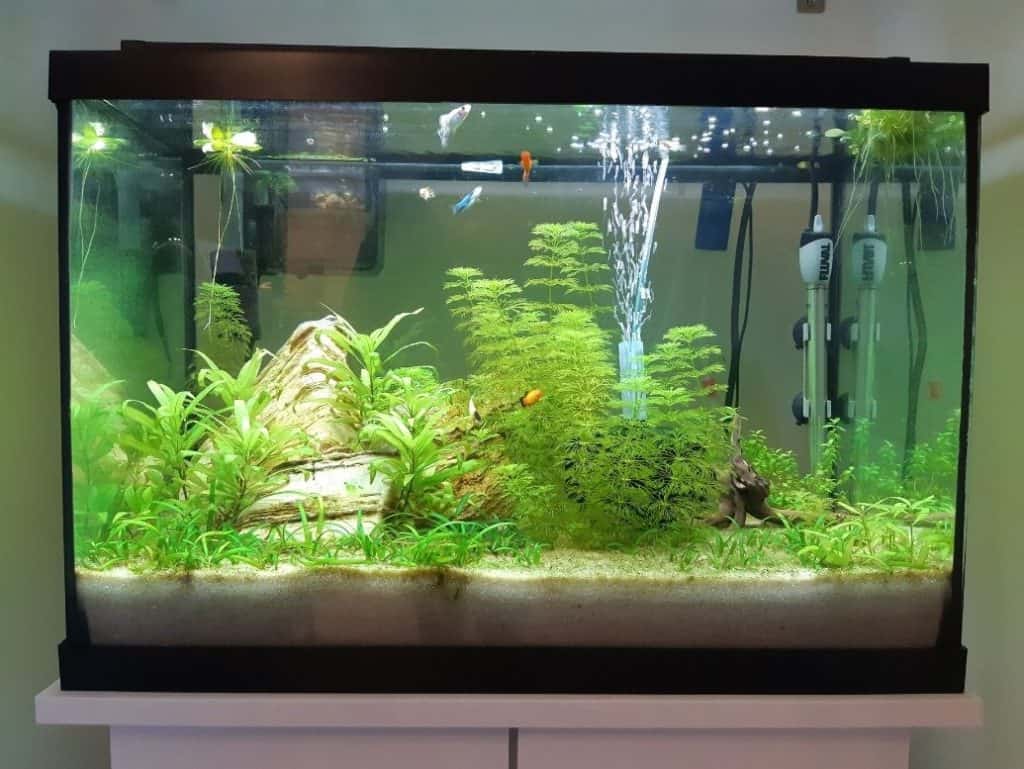
So really the amount you will spend will depend on how densely you want to plant your tank. It’s usually better to plant heavily from the start to minimize algae blooms and to help absorb nitrate and nitrite as the biological filter estalishes.
For a 10 gallon tank you might spend $50-$70 on average. We spent about $150 for our 20 gallon tanks but we could have gotten away with somewhere between $90-$110.
You can also spend less money upfront and start with just a few plants and then propagate them as they grow. After 3-4 months you will likely end up with a densely planted tank this way.
$0.00-$69.99 for lighting
Lighting is crucial for healthy plant growth. However, low-tech setups without added CO2 do not require intense light. We purchased a $50 LED light for our 10-gallon tank and only run it at about 30% intensity.
We bought two for our 20 gallon tank so we could get a more even light distribution – but only one is necessary.
This is because highly intense light without enough CO2 and fertilization will cause algae. You need to match your lighting to the level of plant nutrients. And for low-tech tanks this is less than most people realize.
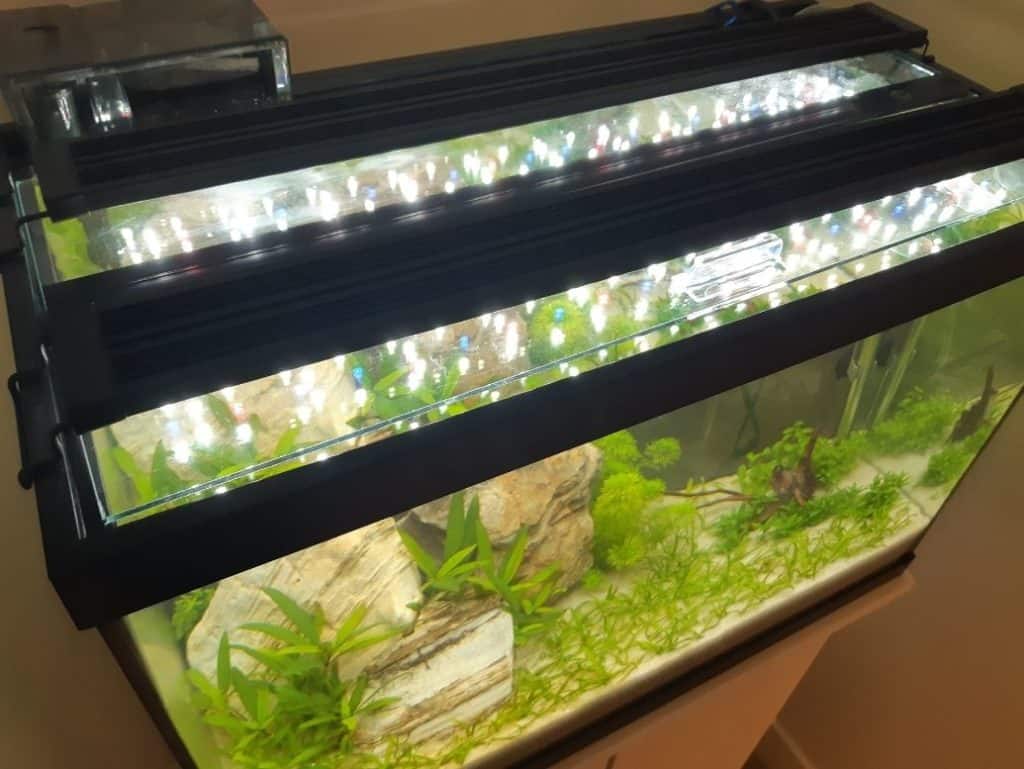
Technically, you could spend $0 on lighting and simply use the light that is included with some aquarium kits. But these lights are usually not quite strong enough so we would recommend buying an inexpensive LED aquarium light off Amazon or at your local fish store.
$6.98-$44.99 for a filter
Sponge filters and hang-on-the-back filters are the two main filtration types you will want to consider for smaller aquariums. We use sponge filters because they are simple, quiet and allow us to make use of an air stone.
Hang-on-the-back filters are a great option too so it’s up to your personal preference.
Sponge filters are much less expensive and will likely only cost about $20 for a 30 gallon tank. HOB filters are a little more expensive and require cartridge replacement every month or so.
$10.99-$44.99 for fertilizers
Fertilization refers to both root tabs and liquid fertilizers. Root tabs will be more expensive in the long run as you need to replace them every 4-6 weeks. But they are also not necessary if you’re using a dirted tank setup or aquasoil.
API Leaf Zone is the least expensive liquid fertilizer we found at around $10.99 while other brands can be as much as $44.99. We recommend buying what’s available and experimenting until you find a brand that works best for your tank.
We currently use Thrive.
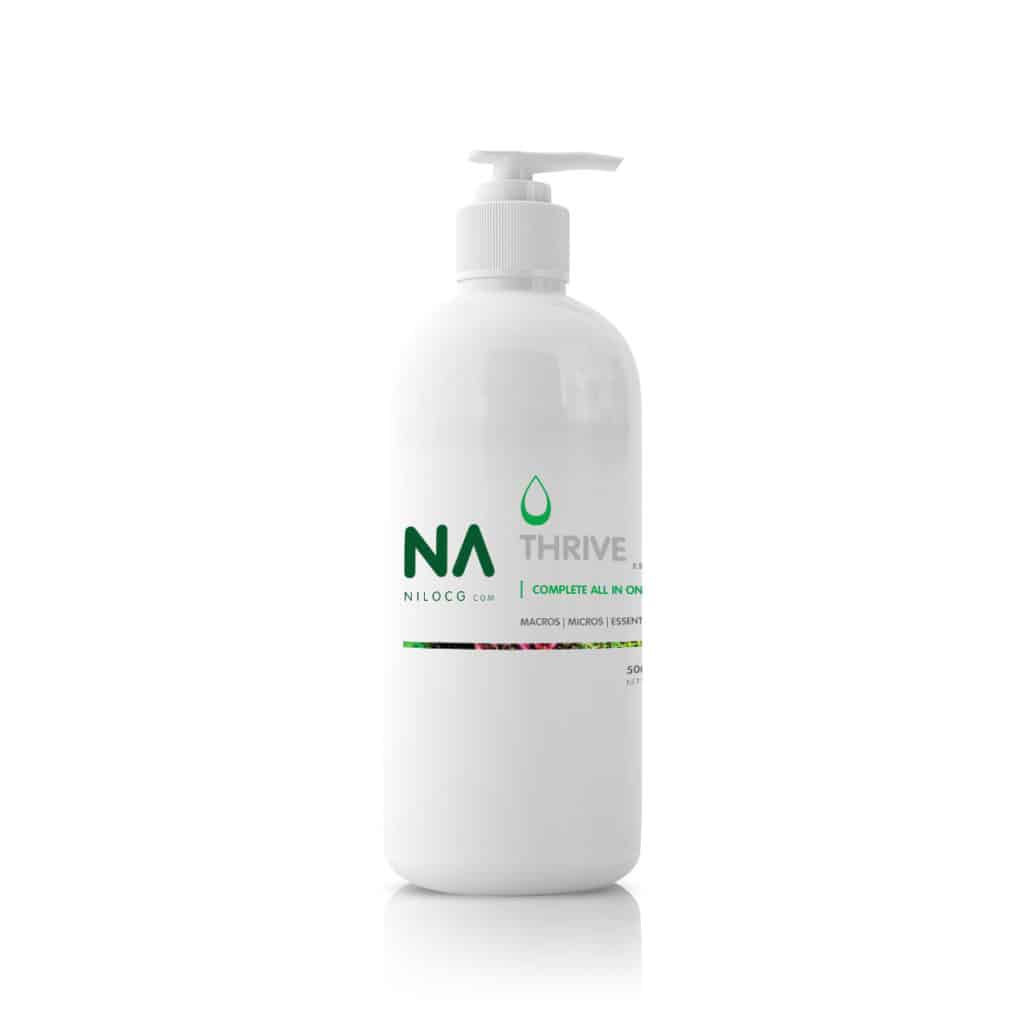
How to save money on your planted aquarium
Pretty much every piece of aquarium has a less expensive alternative. If you do some shopping around you will likely be able to find some good deals to save some money.
But there a few methods for saving money:
Buy second hand items
Lighting and filtration can be purchased second hand to save a bit of money. Just make sure you test them to make sure they work. Also, make sure you clean them in a diluted bleach solution to make sure you are not cross-contaminating from someone else’s tank.
We do not recommend buying heaters, tanks or substrate that has been used. Heaters have a lifespan and might be at higher risk of malfunctioning or breaking if you don’t know how old it is.
Tanks can be okay if you know how to properly inspect the seal. But the risk is that you buy a tank of someone that is many years old and has had water slowly wearing down the seal. It’s better to be safe and pay a little more money for a newly manufactured tank.
Used substrate is difficult to clean. Also, active dirt or aquasoil substrate will deplete of their nutrients and will be much less effective, if not completely useless, in providing plant nutrition.


